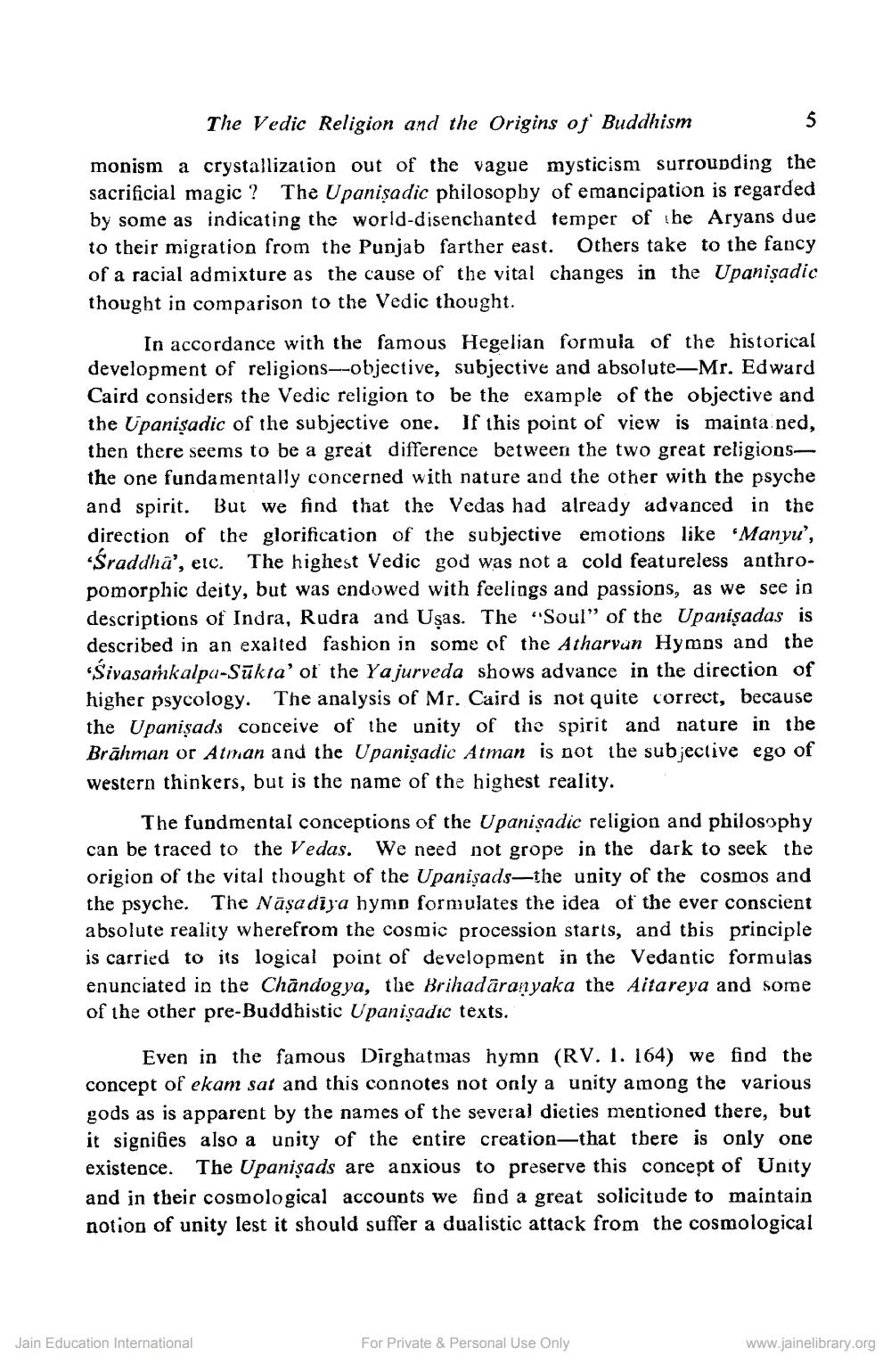________________
5
The Vedic Religion and the Origins of Buddhism
monism a crystallization out of the vague mysticism surrounding the sacrificial magic? The Upanisadic philosophy of emancipation is regarded by some as indicating the world-disenchanted temper of the Aryans due to their migration from the Punjab farther east. Others take to the fancy of a racial admixture as the cause of the vital changes in the Upanisadic thought in comparison to the Vedic thought.
In accordance with the famous Hegelian formula of the historical development of religions--objective, subjective and absolute-Mr. Edward Caird considers the Vedic religion to be the example of the objective and the Upanisadic of the subjective one. If this point of view is mainta ned, then there seems to be a great difference between the two great religionsthe one fundamentally concerned with nature and the other with the psyche and spirit. But we find that the Vedas had already advanced in the direction of the glorification of the subjective emotions like 'Manyu', 'Śraddha', etc. The highest Vedic god was not a cold featureless anthropomorphic deity, but was endowed with feelings and passions, as we see in descriptions of Indra, Rudra and Usas. The "Soul" of the Upanisadas is described in an exalted fashion in some of the Atharvan Hymns and the 'Sivasankalpa-Sukta' of the Yajurveda shows advance in the direction of higher psycology. The analysis of Mr. Caird is not quite correct, because the Upanisads conceive of the unity of the spirit and nature in the Brahman or Atman and the Upanisadic Atman is not the subjective ego of western thinkers, but is the name of the highest reality.
The fundmental conceptions of the Upanisadic religion and philosophy can be traced to the Vedas. We need not grope in the dark to seek the origion of the vital thought of the Upanisads-the unity of the cosmos and the psyche. The Naṣadiya hymn formulates the idea of the ever conscient absolute reality wherefrom the cosmic procession starts, and this principle is carried to its logical point of development in the Vedantic formulas enunciated in the Chandogya, the Brihadaranyaka the Aitareya and some of the other pre-Buddhistic Upanisadic texts.
Even in the famous Dirghatmas hymn (RV. 1. 164) we find the concept of ekam sat and this connotes not only unity among the various gods as is apparent by the names of the several dieties mentioned there, but it signifies also a unity of the entire creation-that there is only one existence. The Upanisads are anxious to preserve this concept of Unity and in their cosmological accounts we find a great solicitude to maintain notion of unity lest it should suffer a dualistic attack from the cosmological
Jain Education International
For Private & Personal Use Only
www.jainelibrary.org




